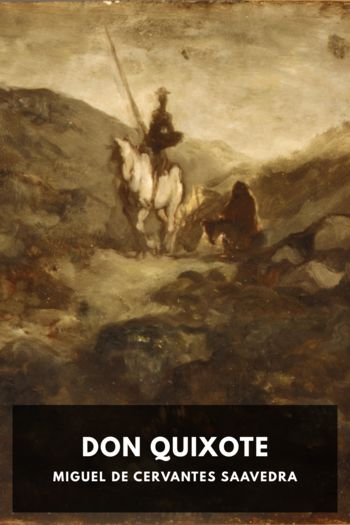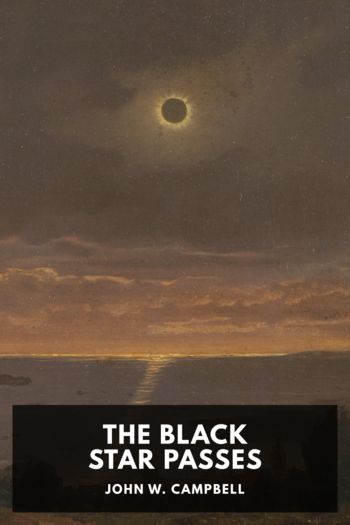Islands of Space, John W. Campbell [self help books to read TXT] 📗

- Author: John W. Campbell
Book online «Islands of Space, John W. Campbell [self help books to read TXT] 📗». Author John W. Campbell
By John W. Campbell.
This ebook is the product of many hours of hard work by volunteers for Standard Ebooks, and builds on the hard work of other literature lovers made possible by the public domain.
This particular ebook is based on a transcription produced for Project Gutenberg and on digital scans available at the HathiTrust Digital Library.
The writing and artwork within are believed to be in the U.S. public domain, and Standard Ebooks releases this ebook edition under the terms in the CC0 1.0 Universal Public Domain Dedication. For full license information, see the Uncopyright at the end of this ebook.
Standard Ebooks is a volunteer-driven project that produces ebook editions of public domain literature using modern typography, technology, and editorial standards, and distributes them free of cost. You can download this and other ebooks carefully produced for true book lovers at standardebooks.org.
PrologueIn the early part of the Twenty Second Century, Dr. Richard Arcot, hailed as “the greatest living physicist,” and Robert Morey, his brilliant mathematical assistant, discovered the so-called “molecular motion drive,” which utilized the random energy of heat to produce useful motion.
John Fuller, designing engineer, helped the two men to build a ship which used the drive in order to have a weapon to seek out and capture the mysterious Air Pirate whose robberies were ruining Transcontinental Airways.
The Pirate, Wade, was a brilliant but neurotic chemist who had discovered, among other things, the secret of invisibility. Cured of his instability by modern psychomedical techniques, he was hired by Arcot to help build an interplanetary vessel to go to Venus.
The Venusians proved to be a humanoid race of people who used telepathy for communication. Although they were similar to Earthmen, their blue blood and double thumbs made them enough different to have caused distrust and racial friction, had not both planets been drawn together in a common bond of defense by the passing of the Black Star.
The Black Star, Nigra, was a dead, burned-out sun surrounded by a planetary system very much like our own. But these people had been forced to use their science to produce enough heat and light to stay alive in the cold, black depths of interstellar space. There was nothing evil or menacing in their attack on the Solar System; they simply wanted a star that gave off light and heat. So they attacked, not realizing that they were attacking beings equal in intelligence to themselves.
They were at another disadvantage, too. The Nigrans had spent long millennia fighting their environment and had had no time to fight among themselves, so they knew nothing of how to wage a war. The Earthmen and Venusians knew only too well, since they had a long history of war on each planet.
Inevitably, the Nigrans were driven back to the Black Star.1
The war was over. And things became dull. And the taste of adventure still remained on the tongues of Arcot, Wade, and Morey.
IThree men sat around a table which was littered with graphs, sketches of mathematical functions, and books of tensor formulae. Beside the table stood a Munson-Bradley integraph calculator which one of the men was using to check some of the equations he had already derived. The results they were getting seemed to indicate something well above and beyond what they had expected.
And anything that surprised the team of Arcot, Wade, and Morey was surprising indeed.
The intercom buzzed, interrupting their work.
Dr. Richard Arcot reached over and lifted the switch. “Arcot speaking.”
The face that flashed on the screen was businesslike and determined. “Dr. Arcot, Mr. Fuller is here. My orders are to check with you on all visitors.”
Arcot nodded. “Send him up. But from now on, I’m not in to anyone but my father or the Interplanetary Chairman or the elder Mr. Morey. If they come, don’t bother to call, just send ’em up. I will not receive calls for the next ten hours. Got it?”
“You won’t be bothered, Dr. Arcot.”
Arcot cut the circuit and the image collapsed.
Less than two minutes later, a light flashed above the door. Arcot touched the release, and the door slid aside. He looked at the man entering and said, with mock coldness:
“If it isn’t the late John Fuller. What did you do—take a plane? It took you an hour to get here from Chicago.”
Fuller shook his head sadly. “Most of the time was spent in getting past your guards. Getting to the seventy-fourth floor of the Transcontinental Airways Building is harder than stealing the Taj Mahal.” Trying to suppress a grin, Fuller bowed low. “Besides, I think it would do your royal highness good to be kept waiting for a while. You’re paid a couple of million a year to putter around in a lab while honest people work for a living. Then, if you happen to stub your toe over some useful gadget, they increase your pay. They call you scientists and spend the resources of two worlds to get you anything you want—and apologize if they don’t get it within twenty-four hours.
“No doubt about it; it will do your majesties good to wait.”
With a superior smile, he seated himself at the table and shuffled calmly through the sheets of equations before him.
Arcot and Wade were laughing, but not Robert Morey. With a sorrowful expression, he walked to the window and looked out at the hundreds of slim, graceful aircars that floated above the city.
“My friends,” said Morey, almost tearfully, “I give you the great Dr. Arcot. These countless machines we





Comments (0)